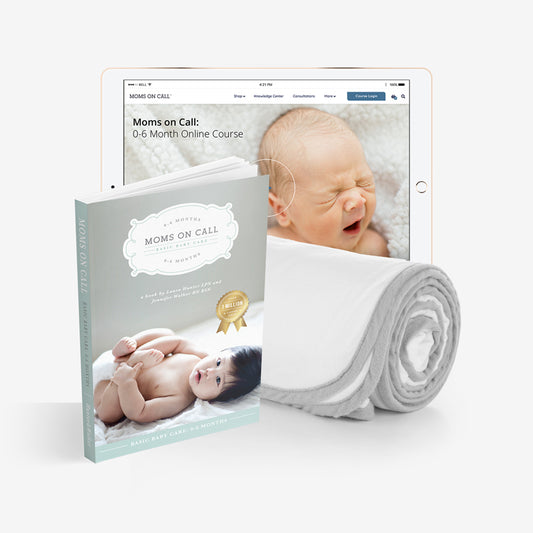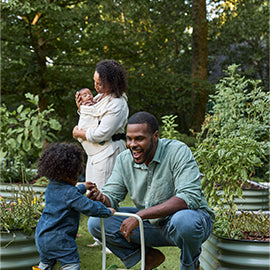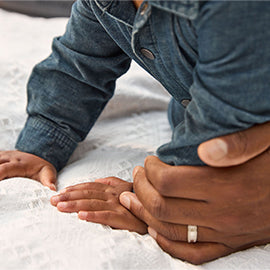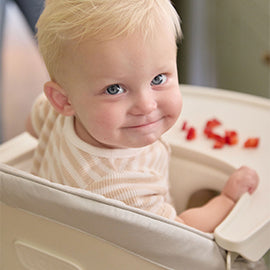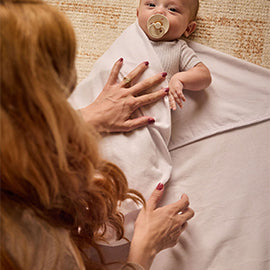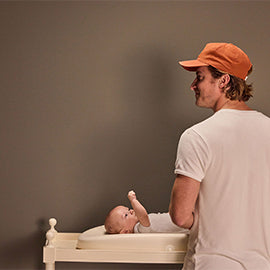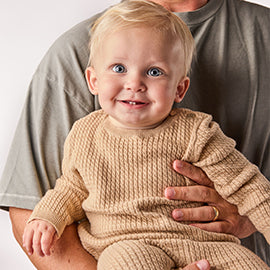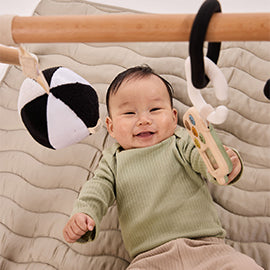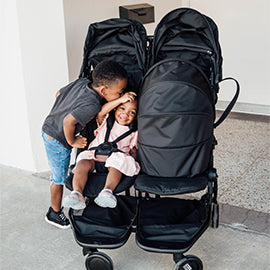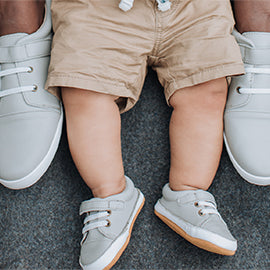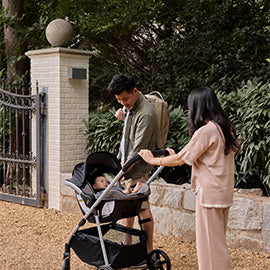Hello, Moms on Call Family! My name is Allison Hunter. I have been swimming competitively for 14 years and am now a Head Swim Coach at Stingrays Swimming. I am also the daughter of Laura Hunter, co-founder of Moms on Call.
I am so excited to share with you some tips and tricks to make your little one safe and comfortable in the water!
Here are a few things to say before we start:
- Whether your child loves the water or hates it, we need to make sure they are safe and comfortable.
- Do not feel discouraged when one child is further along than the other.
- All children are different, and sometimes one child needs more instruction than another.
- These tips are designed to help guide your time at the pool with your little ones.
First, the start of my swim lessons always consists of 2 things:
- The Monkey Climb
- Monkey Climbing is when they walk their hands along the wall and get to feel their weight as they move across the pool wall. Monkey climbing is hands-down one of the most important aspects of toddler swim lessons.
- If your little ones know that if they fall in, they can grab the wall and bring themselves back to the stairs, it is literally a lifesaver.
- An easy way to teach this is to have them hold on to the wall and then let go and let them feel their weight. If you bring a toy and put it on the wall, that toy might make them more inclined to get to it!
- Blowing Bubbles
- Blowing bubbles is also incredibly important, as it shows us that your child can keep water out of their mouth. It is super important that they don’t drink the water or swallow it.
- Young kids like to imitate their parents and the people around them! So, to help them start to realize that bath water and pool water do not go in their mouths, start blowing bubbles during bath time, and then in the pool. You can always blow in their faces to help them realize that air comes out of their mouth.
- Once you are comfortable knowing they can keep water out of their mouths, then we can start to move forward with letting them get their face in the water!
- What we need to do as parents is make it as fun as possible.
- Have your child “swim” between you and another grown-up and cheer them on each time they get passed between you, making it a positive and fun atmosphere for everyone to enjoy.
To make my swim lessons really work, I have to know how each toddler is designed!
When I started teaching 4 years ago, the Moms on Call SMART Paradigm and Toddler by Design app helped me further understand who my little swimmers were!
Each toddler and child are different, so understanding who your child is, by using the Toddler By Design app, might help guide you through everyday life as well as teaching your child in the pool!
Here are some quick and easy descriptions of each of the toddler types!
Social
- Easy to talk to, wants to be the leader, wants attention and one on one engagement.
- When I have a social child, I like the lesson to be fast paced, with lots of toys and fun. I like to have them do something for me, such as kick their feet or blow bubbles, then we play a game!
- Tips for social kids:
- Keep them occupied and do not have many kids in the pool when you are working with them. They get distracted easily!
Movement
- Fast-paced and fearless, highly confident
- Movement kids are the best and fastest at learning and understanding *HOW* to swim, but safety is another thing! They understand their body, and I can use that confidence to get them swimming!
- Tips for movement swimmers:
- Make sure there are clear rules and boundaries in place, as we want them to be safe.
- You also need to make sure they can monkey climb so that in case they fall in, they will know what to do.
Engineer
-
Make things a process with three steps that always go in the same order.
- “First we hug, then I step on the first step, then you step on the first step. The process is what drives an engineer.
-
These kids want proper instructions and structure, and they are on their OWN timing!
- An engineer wants clear instructions on what to do, it often takes time to warm up to others, and they can be scared to try new things.
-
Tips for an Engineer:
- Make sure they know they are safe, play games and make it fun.
- Tell them clearly what they need to do, and help them if needed.
- Once they know they can swim or do a little thing with swimming or water safety, they do it flawlessly.
-
Biggest caution with an engineer:
- Do not panic if anything happens, such as falling in or off the stairs. Be positive and make it clear that you are so proud of them. This turns the situation into a positive one rather than a negative connotation about the water/pool.
Rule Followers
- Giving them something to be in charge of (e.g., both of you blowing bubbles) is the way to a rule follower’s heart!
- These kids want clear rules and boundaries, and they want to do everything right.
- Rule followers can be difficult in the water and not as confident as other types because they know that the water can be unsafe.
- Tips for rule followers:
- Give them clear rules and give them encouragement; they can do whatever they believe they can do.
- Playing small games and having family and friends in the pool helps them as well, as it makes them feel more safe.
Touch
- Very affectionate and wants all the snuggles. They love attention.
- My touch swimmers are the cutest kids in the whole entire world. I love them with my whole heart.
- Tips for touch kids:
- Gain their trust first. For example, if you ask them to jump in, hold on to them first, then slowly take steps to see if they are ready to jump by themselves.
- Be highly positive with them, as attention and contact are really needed.
Safety is Key!
Regardless of their swimming abilities, you must ALWAYS keep your eyes on your swimmer. Kids under the age of 6 must be within arms’ reach.
When we are swimming with our kids, they are going to get water in their mouths and they are going to cough. We will give them the best rules and boundaries to help them not do that, but odds are they will get water in their mouth.
We need to be calm and help them by patting their back to get the water up and let them say that they are okay. Make sure they can talk. If they are alert, coughing, and spitting (even if they seem scared), that is a good sign. Always watch for fever, persistent cough, and fatigue over the next 3-5 days.
If they cannot talk, vomiting and/or they are still gasping for air, then seek medical attention.
I always recommend that parents are up to date on CPR and First Aid to respond quickly and skillfully in any scenario. The Infant and Child CPR, Choking, and First Aid Online Course is filled with expert-level instruction that’s easy to understand and apply or use (if you ever have to). It is not a certification course, and It is an accessible, easy-to-follow instructional guide for parents and caregivers.
IMPORTANT: Do not be afraid, and do not discourage them from putting their head in the water. Be confident and calm, and get back in the pool.
Swimming is such an amazing tool for the entire family. If you, as a parent, are uncomfortable in the water, especially teaching your child, and you want to learn to help them get better at swimming, get a few lessons with a swim instructor! I teach so many adults, and the best tip I can give is to be calm. If we are calm, then we can process what we want to do in the water in order to help ourselves and our little swimmers!


